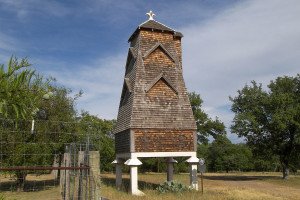At one time the world had 14 Bat Towers. Seven of these were built in Italy. Today, there are only a few remaining that you can view. One is in Florida and two are in Texas. This article is about why and how these old towers were built, how they operated, the man who designed them and where in the U.S. you can still see them. If your travels take you anywhere near where the surviving Bat Towers are located you may want to add a stop there to your trip planner.
The story of the Bat Towers designed by Dr. Charles Campbell is quite unique and quite interesting. It’s a story about a medical doctor who devised a plan to fight one of the most feared diseases of his era, malaria.

Bat Towers Built to Help Fight Against Malaria
Dr. Charles Campbell worked as a city bacteriologist in San Antonio Texas around the turn of the twentieth century. Dr. Campbell was a physician who began experimenting with ways to eradicate malaria which accounted for millions of deaths worldwide annually. This was a natural thing for the doctor to do since he personally treated the malarial sick and knew that the disease was carried by mosquitoes. The question was, how do we cut down on malarial carrying mosquitoes.
The Bat Towers, also referred to as Malaria-Eradicating Guano Producing Bat Roosts, were designed and built to be a deluxe bat house that the bats would continue to come back to so they could feast on the mosquitoes. The towers were usually built in wet areas where mosquitoes were most prevalent.
See the Sugarloaf Key Bat Tower
Also named Perky’s Bat Tower, the structure is listed on the National Register of Historic Places. Even though the local county commissioners at the time thought the bat tower plan was laughable they allowed it to be built.
The tower was built in 1929 by Richter Clyde Perky, a fish lodge owner with plans purchased by a from Dr. Campbell. The tower was pretty well built as it survived several hurricanes. The purpose of this particular thirty foot tall tower was to help control the mosquito problem in the Lower Keys. Perky was also a real estate developer and the mosquito problem, and trying to get it under control, was a major issue for the success of his developments. Probably the biggest problem for tourists at that time in the Lower Keys was the mosquito problem.

Perky’s Bat Tower is definitely off the beaten path. The traveler who enjoys adventure will find this somewhat awkward yet very unique historic structure well worth a stop at. The bat tower, which is free to visit, is located just ff Hwy 1. When driving south on Hwy 1 take a right hand turn on Bat Tower Road toward the airport.
Comfort Texas Bat Tower
The Comfort Texas Bat Tower is located off of FM473 East of IH10 on the Albert Steves Property. The name of this bat tower on the banks of the Guadalupe River is the “Hygieostatic Bat Roost” This is about thirty miles from San Antonio. You can see the tower from the road.
See the Trips Into History articles on the links below…
Touring the Texas Hill Country
Orange Texas Bat Tower
This bat tower is located at the Shangri-La Gardens in Orange Texas. Shangri La Botanical Gardens and Nature Center comprising 252 acres is a world-class venue which is an excellent trip stop for the entire family. Orange Texas is on the border with Louisiana about 110 miles east of Houston.

How Effective Were Dr. Campbells Bat Towers?
Most research on the project will tell you that, in it’s entire existence, not one bat ever roosted in the Sugarloaf Key Bat Tower. There’s a story that Perky even sent someone to Cuba to try to bring their bats back to Florida. Perky also put bait in the tower with an unknown bait (obtained from Dr. Campbell) but this also didn’t work because a storm washed away the box. In the meantime Dr. Campbell had passed away and the bait formula was not obtainable. Campbell reportedly sold the bait for $500 per box.
As a result, mosquitoes continued to rule on Sugarloaf Key and did indeed continue to bother the endeavors of Richter Clyde Perky.
Regardless of the results of Dr. Charles Campbell’s Bat Towers during the early part of the nineteenth century, the surviving bat towers that are largely off the beaten path offer a very unique trip into history.
If your travels take you to the Florida Keys, Comfort Texas or Orange Texas, a short stop at any of these three gives you a glimpse of one man’s experiment to help eradicate malaria.
(Article copyright Trips Into History. Photos and images in the public domain)
